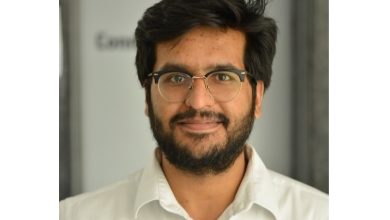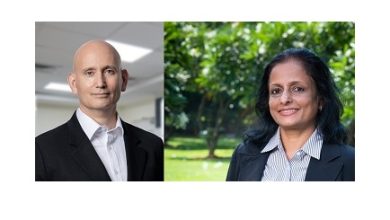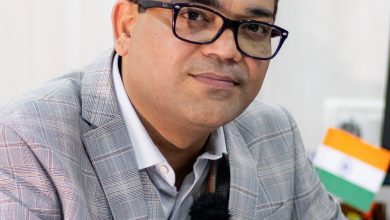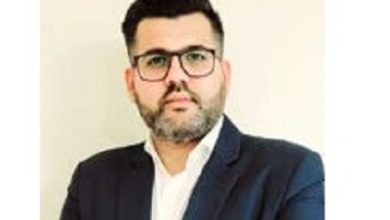
Dr Joep Geraedts, Emeritus Professor of Genetics and Cell Biology at Maastricht University has been instrumental in developing clinical genetics and assisted reproduction
Dr Joep Geraedts is a Dutch scientist, professor and specialist in the field of human genetics and reproduction. He is known for the introduction and development of preimplantation genetics. Dr Geraedts (1948) obtained a BSc (1969) and MSc (1972) in general biology at the University of Nijmegen. At Leiden University he defended his PhD thesis in 1975. From 1982 to 2013 he was a professor of Genetics and Cell Biology at Maastricht University and head of the Department of Clinical Genetics of the University Hospital. In 1995 he started the first and only licensed PGD programme in the Netherlands. He was chairman of the Dutch Society of Human Genetics (1984-1988); chairman of the Dutch Association of Clinical Genetics Centers (2000-2013), and chairman of the European Society of Human Reproduction and Embryology (2007-2009) and member of the Dutch Health Council.
Background and education
Dr Geraedts was born in the Netherlands in a small village in the Province of Limburg, near the German border.
He decided to go to the University of Nijmegen to study General Biology. After he obtained Bachelor’s degree,
he had to select three optional subjects for my Master’s. From the beginning, it was clear to him that genetics would be the main subject and chemical cytology and zoology the minors. His research for all three topics was quite successful and resulted in either presentations at conferences or journal articles. He is still very grateful that his teachers were all enthusiastic and inspired him tremendously.
Dr Geraedt’s supervisor in genetics was Dr Lee T Douglas from the US. He used Drosophila melanogaster as a model organism to study irregularities of the Mendelian laws like meiotic drive, segregation distortion and distributive pairing. He was allowed to present his findings at the 2nd European Drosophila Research Conference in Zürich in 1970.
Besides the progress reports of the experimental work of each student during one afternoon a week, new journal articles and books were presented and discussed. He became very interested in human genetics after discussing ‘Man and his Future’ and ‘Genetics and the Future of Man’ from 1963 and 1965. Thereafter he was looking for a PhD position in this area. He obtained one at Leiden University.His supervisor and promotor was Peter Pearson, who was one of the leading cytogeneticists introducing differential chromosomal staining techniques. He used these to study the normal and abnormal variation of chromosomes and especially chromosomal polymorphisms. In 1975, the year that the University of Leiden was exactly 400 years old, he defended my thesis.
Teaching journey
Over the years he was involved in education at all sorts of levels: teaching at the undergraduate level, practical training in the laboratory and supervising his Master’s and PhD thesis. He was also been dean of a so called Transnational University in which the University of Hasselt (Belgium) and the University of Maastricht in
the Netherlands together offered a bachelor’s training programme in the life sciences. Furthermore, as a biologist, I have been the chairman of the exam committee of the medical faculty.
Main research area
From the beginning, he has been interested in genetics and reproduction. Reproductive genetics deals with
the relationship between the genetic material and reproduction and includes the transmission from one generation to the next and also the effects of genetic abnormalities which can hamper reproduction. Finally, he has always been interested in the diagnosis of genetic abnormalities in gametes and embryos.
Cutting-edge technologies in the research field
When he started in the early 70s there was still limited knowledge regarding genetics and the only human reproduction that was possible was natural. Therefore, how couples with an increased risk could avoid transmitting genetic disease or chromosomal abnormalities was limited as well: to refrain from having children; sperm donation and in some cases prenatal diagnosis. After more genetic knowledge became available and especially molecular methods to study genes at the DNA level new diagnostic options arrived. After Steptoe and Edwards had introduced IVF the number of treatment options increased spectacularly. At the end of his career, the following topics could be added: Donation of oocytes; Invasive Prenatal Diagnosis (PND) for almost all genetic disorders; Non-Invasive Prenatal Diagnosis (NIPD); Preimplantation genetic diagnosis (PGD); Spindle transfer or pronuclear transfer to avoid MtDNA defects and genome editing.
Challenges and development
According to Dr Geraedt, many of the challenges are less technical but the clinical application has more ethical and societal aspects and impact. “About 20 years ago, I was able to bring together experts from the European Society of Human Genetics (ESHG) and the European Society of Human Reproduction and Embryology (ESHRE) to discuss the developments at the interface between clinical genetics and assisted reproduction. Among other topics, the need for proper genetic counselling before any new technique can be applied and the lack of randomised clinical trials to substantiate that newly developed techniques are both effective and efficient was clear. Studies are also needed to address issues related to the impact of assisted reproduction on epigenetic reprogramming of the early embryo.”
Furthermore, the legal landscape regarding assisted reproduction is evolving but remains very heterogeneous and often contradictory. The lack of legal harmonisation and uneven access to infertility treatment and preimplantation and prenatal genetic diagnosis fosters considerable cross-border reproductive care in Europe and beyond.
Applied research in clinical practice
Applied research should be beneficial for the patient who is asking for help. In case of a rare disorder, the diagnosis will be welcomed. However, unless in other medical disciplines treatment of patients presenting with a genetic disease is only possible in a very small minority of cases. However, treatment at the level of the family, which means stopping the transmission of the disease, is helping the next generation.
Benefits to patients
He says, “My major contribution was the introduction and development of preimplantation genetics. My centre in Maastricht was and still is the only one in the Netherlands having a license to perform this. Over the years the number of patients making use of this alternative has grown from a few to more than 500 each year. To avoid
the need to come to Maastricht for IVF there is a cooperation with another three hospitals in the country. They do the IVF and take it to biopsies which are then sent to the diagnostic centre in Maastricht.”
Work-life balance
He says, “I have never worked according to standard working hours. Furthermore, I have been travelling
abroad quite a lot. This means that my family was not seeing me regularly. I tried to be at home as many weekends as possible and we spent the winter and the summer holidays. Only now after two years of COVID-19, I have the idea that Zoom and Teams could have been agood replacement making many travels unnecessary.”
Plans
He adds, “At the end of my scientific career and at my age the number of plans is limited. I am writing a biography and of course, I hope to keep contributing to medical journals and OBM Genetics.”
Ref: OBM Genetics Editorial Office. An Interview with Dr. Joep Geraedts. OBM Genetics 2022; 6(1): 148; doi:10.21926/obm.genet.2201148.
Source: OBM Genetics Editorial Office




